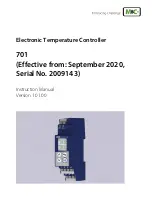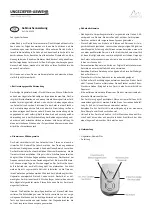
CHAPTER 5: SETTINGS
PRODUCT SETUP
L90 LINE CURRENT DIFFERENTIAL SYSTEM – INSTRUCTION MANUAL
5-85
5
As mentioned in the preceding GOOSE and Reports sections, the members whose values are communicated by these
services are itemized in an ordered list known as a data set. Each UR with the IEC 61850 option has 18 data sets (six fast
and 12 slow). Each data set can contain as many as 64 members. Any data set can be used simultaneously by any number
of TxGOOSE elements and/or by any number of Configurable Report elements. UR Setup software can configure any
FlexLogic operands and any FlexAnalog operands as members.
Figure 5-34: IEC 61850 DataSets
UR Setup software requires data set members to be IEC 61850 data objects or data attributes with Functional Constraint
ST or MX. Certain FlexLogic and FlexAnalog operands have factory-assigned data attributes as tabulated in the UR Family
Communications Guide. All FlexLogic and FlexAnalog operands can be user-assigned to GGIO1 or GGIO4 data attributes,
so that operands without factory-assigned data attributes can still have their values published. See the GGIO1 and GGIO4
sections later for details.
Datasets used by TxGOOSE1, TxGOOSE2, and/or by reports also provide a chatter suppression service for their Boolean
members. Oscillation in a value, also known as chatter, can be caused by errors in logic programming, inadequate
hysteresis (deadband) on a threshold, or a failed station component. Chatter can flood a communications network with
GOOSE messages, degrading response time for all users. If chatter is detected in a Boolean member, TxGOOSE suspends
GOOSE event message triggering and report message triggering from that member for as long as the condition exists, and
for a minimum period of one second. While sending is suspended, a self-test message identifying the specific data item
detected as oscillating is activated.
For a summary of the panels in which the data sets are used, the path is
Settings > Product Setup > Communications >
IEC 61850 > DataSets > Summary
.
For the settings, navigate to
Settings > Product Setup > Communications > IEC 61850 > DataSets > TT6DataSet1
for the
first data set.
Copy and paste functions are available when right-clicking a DataSet. They allow the target dataset to be configured
based on its order code. If some dataset items are not supported, they are not pasted, and a warning message shows a list
of dataset items that were not supported and not pasted. The
DataSet name
is not copied or pasted. In short, use this
feature to copy a
DataSet Member
setting and paste it into another Member setting, a text file, or Word, as examples.
















































